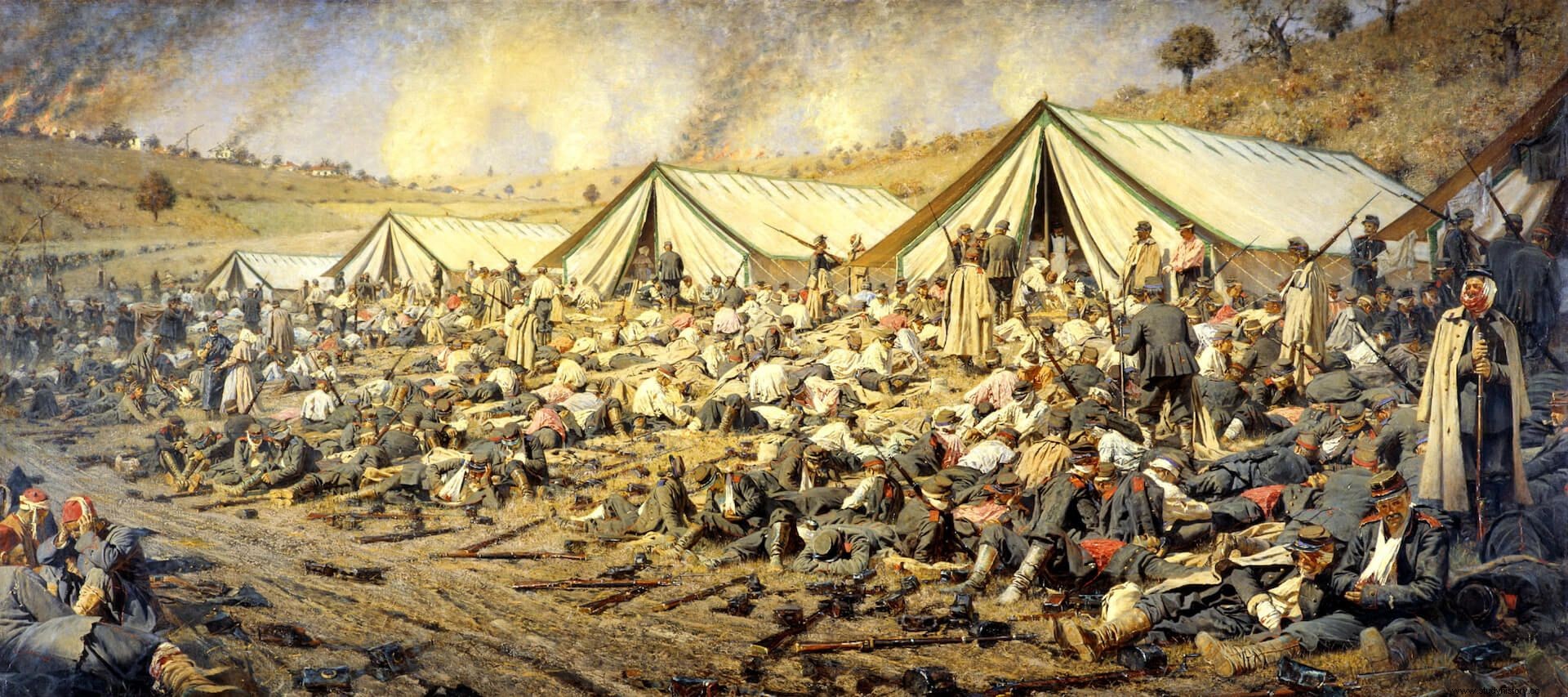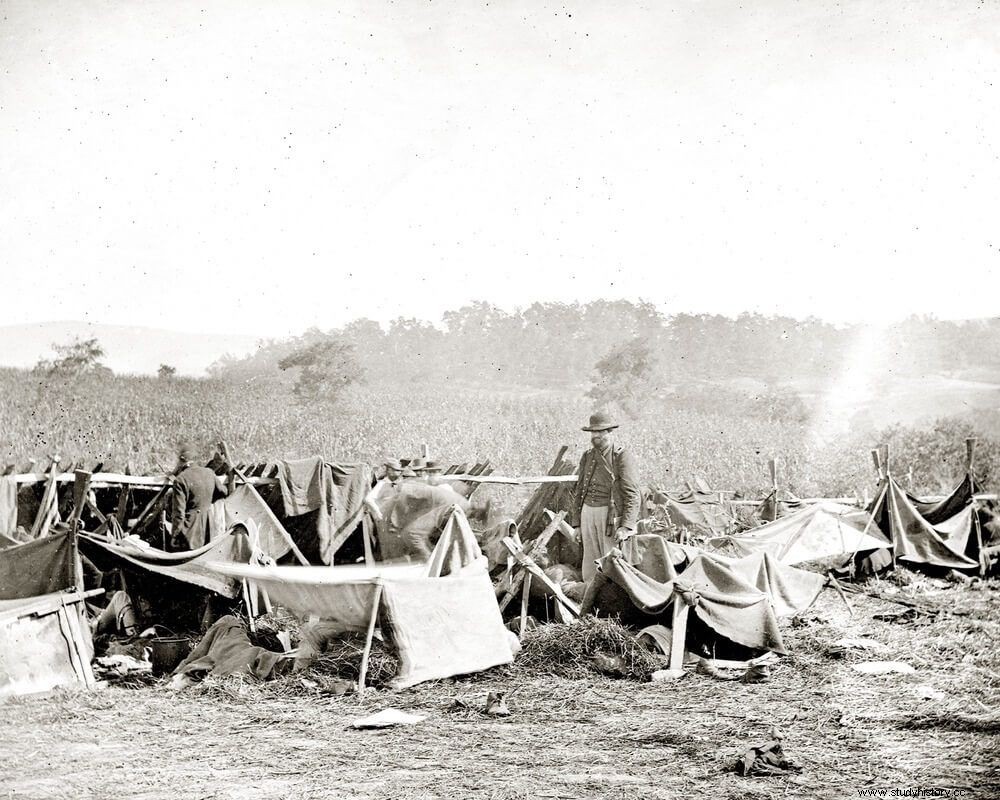
Until the first half of the 19th century, the methods used for the patient to endure the pain or not move during a surgical intervention were simple and brutal . Very fast operations; alcoholic beverages, bindings with ropes or straps; studs of leather, wood or bullets to bite into. Sometimes another more expeditious method was used to render the patient unconscious:a good blow to the head. At the beginning of the century, the first anesthetics began to appear, such as opiates or alcohol, which had numerous side effects and could be very dangerous, even fatal.
The first anesthetics were of the narcotic or soporific type, that is, they dull the senses and induce sleep. The latter included opium, mandrake, laudanum (a combination of alcohol and opium), alcohol or belladonna. Pre-Columbian cultures used, and still use, coca leaves for the treatment of pain. These substances provided some degree of pain relief, sedation or amnesia, but with serious side effects (addiction) and could not completely dull the pain on their own. Likewise, the same dose could produce both the desired effect and death in two different patients.
Primitive surgery:the faster the better
Before the second half of the 19th century, one of the greatest terrors of humanity was the pain caused by an operation. In the days before anesthesia, what determined the quality of a surgeon was his speed, and the eminent Scottish surgeon Robert Liston (1794-1847) stood out for it. He once removed a scrotal tumor weighing 20 kg (the patient had to transport it from one place to another in a wheelbarrow) in four minutes.
However, sometimes speed had dire consequences:he managed to amputate a leg in two and a half minutes, but in his haste he also sliced off his unfortunate patient's testicles. In another amputation, he severed a leg, the fingers of his assistant, and the tails of the coat of a distinguished surgeon colleague who was present, all in less than two minutes. The latter was so terrified that he fell dead from fright. Patient and assistant would also die from gangrene, hence it has been written that this was the only operation in history with a 300 percent mortality.

Before the generalization of anesthesia, the number of surgical operations that could be carried out was limited:superficial operations, amputations, superficial tumors or stones in the bladder. Most patients had to be restrained or tied down, and although some were lucky enough to pass out, the agonized screams of pain, both during the operation and postoperatively, terrified patients in the waiting room. On one occasion Liston was operating on a bladder stone when the patient managed to free himself from his strong assistants. He ran out of the room and locked himself in the bathroom, refusing to bear the pain any longer. Liston had to break down the door and drag his patient back into the operating room in order to finish the operation.
The introduction of anesthesia allowed surgery to “slow down”, becoming more precise and allowing access to areas that were practically forbidden until then, such as the abdomen, chest or brain. Robert Liston was also one of the first to perform an operation under anesthesia:on December 21, 1846, Liston amputated the leg of a chauffeur who was given an anesthetic ether by a medical student. However, the clinical use of anesthesia would not become widespread in medical practice until 20 years later.
The "coming of age" of anesthesiology
The use of anesthetic agents came of age during the second half of the 19th century, more specifically after the American Civil War (1861-1865). Although the use of anesthetic elements such as ether or chloroform had already begun experimentally during the 1840s and the years immediately before the Civil War, anesthetic agents had already been used in conflicts such as the war between Mexico and the United States. In the USA (1846-1848) or the Crimean War (1853-1856) –a conflict that also witnessed the birth of modern nursing–, before the civil war the use of anesthesia was not generalized in civilian medical practice.
The reasons why, around 1860, anesthesia with ether or chloroform remained little more than a scientific curiosity were diverse. Cultural:Before the Civil War, it was considered unmanly in the US for a man to undergo surgery under anesthesia (or even groan or scream during the operation), so available anesthetic methods were reserved for women and to children. There were also religious motivations:there were those who were opposed to relieving the pain of parturients because it contradicted the biblical mandate ("You will give birth to your children in pain", etc.). Likewise, there was also the general belief among doctors that using "cold steel" without anesthesia had a beneficial effect, since it would avoid the supposed depression that would follow the use of anesthesia. In a situation of very intense pain, it was thought that keeping patients awake was equivalent to keeping them alive.

The American Civil War This perception would definitely change. The treatment of the hundreds of thousands of wounds and mutilations suffered during the American Civil War was of great importance in the establishment of the regular use of anesthesia in routine clinical practice. A study published by the American Society of Anesthesiology reports at least 120,000 cases of the use of anesthesia in war wound operations by physicians on both sides. Both the Union and Confederate medical corps had advanced surgical manuals, both domestic and foreign. Southern surgeon J. Chisholm published a treatise on field surgery in 1861 that included a chapter on the use of chloroform. Union Army surgeons also had a trial dealing with the surgical use of this same substance.
The surgical practice of the civil war became a clinical trial of unprecedented dimensions , and the mortality rate associated with the use of anesthetic agents was remarkably low. Chisholm claimed that he had never lost a patient anesthetized with chloroform after more than 10,000 operations, while the confederate McGuire claimed to have used chloroform in more than 28,000 operations without loss of life attributable to the anesthetic agent. The first-hand practice of techniques for the use of anesthetic agents, as well as their side effects and complications, gave the nearly 15,000 physicians who served in both armies experience and knowledge that would not have been possible without the secession war Once the conflagration was over, the doctors returned to civilian medical practice, where they began to widely apply the techniques learned during four years of war.
